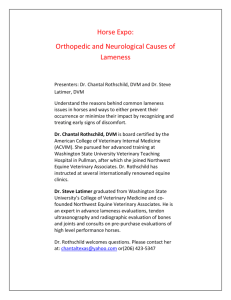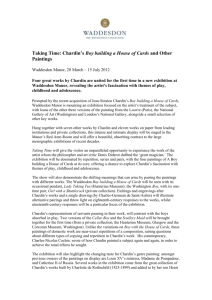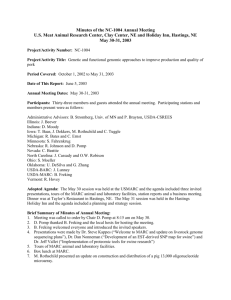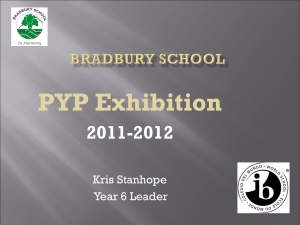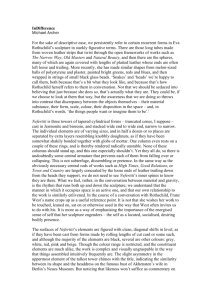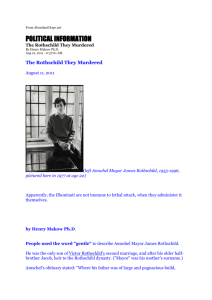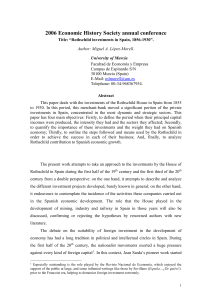Theatres of Life: Drawings From The Rothschild Collection
advertisement
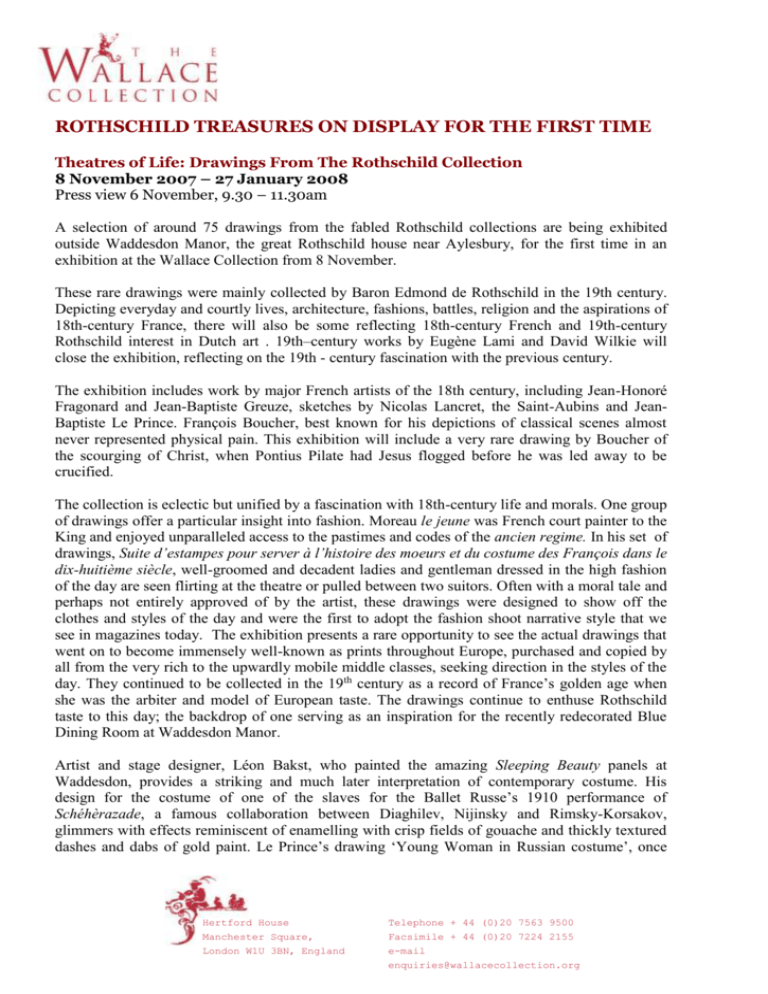
ROTHSCHILD TREASURES ON DISPLAY FOR THE FIRST TIME Theatres of Life: Drawings From The Rothschild Collection 8 November 2007 – 27 January 2008 Press view 6 November, 9.30 – 11.30am A selection of around 75 drawings from the fabled Rothschild collections are being exhibited outside Waddesdon Manor, the great Rothschild house near Aylesbury, for the first time in an exhibition at the Wallace Collection from 8 November. These rare drawings were mainly collected by Baron Edmond de Rothschild in the 19th century. Depicting everyday and courtly lives, architecture, fashions, battles, religion and the aspirations of 18th-century France, there will also be some reflecting 18th-century French and 19th-century Rothschild interest in Dutch art . 19th–century works by Eugène Lami and David Wilkie will close the exhibition, reflecting on the 19th - century fascination with the previous century. The exhibition includes work by major French artists of the 18th century, including Jean-Honoré Fragonard and Jean-Baptiste Greuze, sketches by Nicolas Lancret, the Saint-Aubins and JeanBaptiste Le Prince. François Boucher, best known for his depictions of classical scenes almost never represented physical pain. This exhibition will include a very rare drawing by Boucher of the scourging of Christ, when Pontius Pilate had Jesus flogged before he was led away to be crucified. The collection is eclectic but unified by a fascination with 18th-century life and morals. One group of drawings offer a particular insight into fashion. Moreau le jeune was French court painter to the King and enjoyed unparalleled access to the pastimes and codes of the ancien regime. In his set of drawings, Suite d’estampes pour server à l’histoire des moeurs et du costume des François dans le dix-huitième siècle, well-groomed and decadent ladies and gentleman dressed in the high fashion of the day are seen flirting at the theatre or pulled between two suitors. Often with a moral tale and perhaps not entirely approved of by the artist, these drawings were designed to show off the clothes and styles of the day and were the first to adopt the fashion shoot narrative style that we see in magazines today. The exhibition presents a rare opportunity to see the actual drawings that went on to become immensely well-known as prints throughout Europe, purchased and copied by all from the very rich to the upwardly mobile middle classes, seeking direction in the styles of the day. They continued to be collected in the 19th century as a record of France’s golden age when she was the arbiter and model of European taste. The drawings continue to enthuse Rothschild taste to this day; the backdrop of one serving as an inspiration for the recently redecorated Blue Dining Room at Waddesdon Manor. Artist and stage designer, Léon Bakst, who painted the amazing Sleeping Beauty panels at Waddesdon, provides a striking and much later interpretation of contemporary costume. His design for the costume of one of the slaves for the Ballet Russe’s 1910 performance of Schéhèrazade, a famous collaboration between Diaghilev, Nijinsky and Rimsky-Korsakov, glimmers with effects reminiscent of enamelling with crisp fields of gouache and thickly textured dashes and dabs of gold paint. Le Prince’s drawing ‘Young Woman in Russian costume’, once Hertford House Manchester Square, London W1U 3BN, England Telephone + 44 (0)20 7563 9500 Facsimile + 44 (0)20 7224 2155 e-mail enquiries@wallacecollection.org more demonstrates the fascination with representing fashion and costume, albeit idealised by the conventions of the French pastoral. French commentators were fascinated by the alien Russian costumes which Le Prince brought back from his travels and used to dress the sitters for his Russian genre paintings. This composition has the added interest of being drawn on the back of a musical score. Le Prince was himself a violinist and when attacked by English pirates on the way to Russia, dissuaded them from robbing him by playing the violin. In contrast to these images of the gentler side of private lives, violence is to be found in three rare and untypical images that illustrate the chapters of a field book on gunpowder, missiles and bombs. These images of the horrors of war show both soldiers and, more unusually, civilians affected by gunpowder. The artist, Charles-Nicolas II Cochin, used the skills he developed depicting fêtes and royal fireworks displays. David Wilkie’s drawing ‘Pierrot’ is one of the later pieces in the exhibition but has resonances with Watteau and the 18th-century fête galante. Looking like a character from the commedia del’arte, the 18th-century connotations of this drawing may have appealed to Edmond de Rothschild, but the flat frontality and direct gaze of the disturbingly inked-in eyes, anticipate much later images of carnivalesque figures, including Picasso’s sadly staring clowns. Waddesdon Manor, located on a hilltop overlooking the Aylesbury Vale, was built (1874-89) by Baron Ferdinand de Rothschild to display his outstanding collection of art treasures and to entertain the fashionable world. The Rothschild banking dynasty was immensely powerful in 19th century Europe. The Manor is now owned by the National Trust. Together with the Bowes Museum in County Durham, the Holborne Museum in Bath and Compton Verney, Waddesdon Manor is one of the Wallace Collection’s regional partners. For more information & images please contact Jeanette Ward at Theresa Simon & Partners on 020 7734 4800 / jeanette@theresasimon.com When: 8 November 2007 – 27 January 2008 Opening Times: Monday – Sunday, 10am – 5pm Where: The Wallace Collection, Hertford House, Manchester Square, London, W1U 3BN How to reach us: Tube: Bond St., Baker St. and Oxford Circus Bus: 2, 10, 12, 13, 30, 74, 82, 94, 113, 137, 274 Admission is Free Notes to editors 1. The exhibition is curated by Juliet Carey of Waddesdon Manor, the exhibition will travel (after the Wallace Collection) to the Djanogly Gallery, Nottingham.

